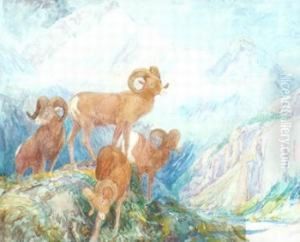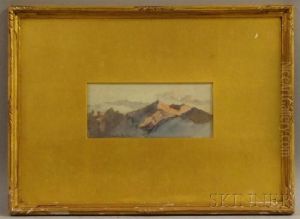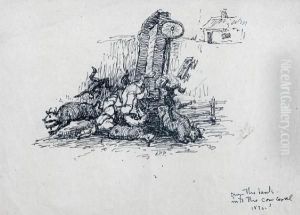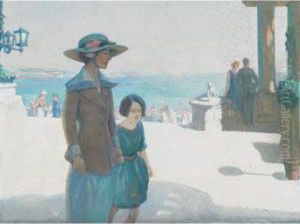Alexander Phimister Proctor Paintings
Alexander Phimister Proctor was a renowned American sculptor with a career that spanned the late 19th and early 20th centuries. Born on September 27, 1860, in Bozanquit, Ontario, Canada, Proctor moved to the United States at a young age, where he grew up in Denver, Colorado. His early experiences in the American West profoundly influenced his artistic direction, leading him to focus primarily on sculptures of animals and figures from American Western history, including Native Americans, explorers, and pioneers. Proctor's work is characterized by its dynamic realism and attention to detail, attributes that made him a pivotal figure in American sculpture.
Proctor received formal art education at the National Academy of Design in New York and later at the Académie Julian in Paris, where he honed his skills and developed his distinctive style. His talent for capturing the spirit of the American West in bronze and stone quickly gained recognition, and he became known for his ability to imbue his sculptures with a sense of vitality and movement. Proctor's notable works include the monumental sculptures 'Buckaroo' and 'Indian Warrior', as well as his contributions to the architectural sculpture of the 1915 Panama-Pacific International Exposition in San Francisco.
Throughout his career, Proctor undertook numerous significant commissions that cemented his reputation as a leading figure in American art. His sculptures adorn various public spaces, parks, and institutions across the United States, testifying to his widespread acclaim and enduring legacy. Alexander Phimister Proctor passed away on September 5, 1950, in Palo Alto, California, leaving behind a rich body of work that continues to be celebrated for its contribution to the artistic portrayal of the American West.



